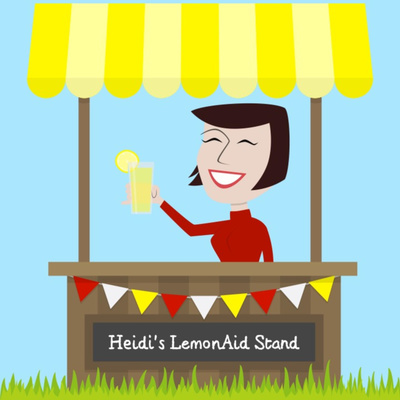
Shownotes Transcript
Interview was done October 5, 2021!
I love meeting new people willing to let me in and share their “lemon to lemonade” experience!
This story is about David who experienced the death of his daughter at birth. It was crushing for this young couple who were hoping for a big family. Through the pain he was able to write a song that has been able to uplift, inspire, and encourage listeners. The song was also an anchor for him and his wife. It resonates with people who have experienced loss and reminds them to hold onto the love, because the pain is temporary, but the love is forever. It is played at the end of the interview. What message do you get from this interview?
David also believes that every who grieves has some similarities which allows us to relate to each other. He wrote this "Letter to the Bereaved" here is part of it:
To the bereaved,
I wrote Charity's Song as a request from my wife. I directed the song at the needs of myself and at my wife. I could tell my wife was feeling guilty for not feeling the pain as much. My own feelings and the needs of my wife went into it.
There are two main themes I tried to infuse into the song. The first one is the idea that whatever sorrow or pain I may feel, when compared to what the Savior went through, I'm not really suffering. Christ's suffering for us -- now that's suffering; and because of what He suffered we don't have to experience the suffering caused by total hopelessness. This theme was primarily aimed at myself.
The second theme was primarily aimed at my wife. I wanted my wife to know that she doesn't have to feel guilty when the pain subsides. It is important to distinguish between pain, sorrow, and love. They are distinct. This can be difficult to understand, because when tragedy strikes, the pain, sorrow, and love are all experienced in close proximity. In time, the pain goes away. As pain withdraws from close proximity to sorrow and love, we can experience a strange transition. This withdrawal of pain begs the following questions:
If I let go of the pain, am I letting go of my right to grieve? If I let go of the pain, am I letting go of my right to shed tears whenever I feel like it? If I let go of the pain, am I forgetting my loved one? If I let go of the pain, am I letting go of my love?
Unanswered, these questions can make it difficult to let go of the pain. In order order to answer these questions, we must understand the nature of pain. Emotional pain parallels physical pain almost perfectly. However, once we understand that pain is connected to injury, we know we don't need to hold on to the pain. We can let go of pain and hold on to grief, sorrow, love, and memories, because pain coincides with injury. Grief, sorrow, love, and memories do not. Fifty years from now, the high intensity pain will be gone, and the gaping hole will be healed. Yet, we will still find random moments to reflect on our loss, shed a few tears, and even rejoice that we are close to a reunion. We can still miss our loved one, and yet function at home and at work. Pain is finite. Our love and our memories are lasting. We can accept that pain comes and goes when it wants to, not when we want or expect it to. We can cope with it, and finally, when it has run its course, we can let it go. While I have experienced pain myself, I don't presume to understand what your experience is like. I pass on these thoughts just in case you do find them useful.
With empathy,
David Willson
